Atomic Mass Games’ Ministravaganza event just happened and Star Wars: Legion was one of the leading acts. Players were greeted by revamped documentation, development roadmaps and future releases. Goonhammer responds here.
Sweeping Changes
We’ve got a rewritten and updated core rulebook, new errata, a point balance pass, and a new Skirmish mode handbook. The game has a new logo and unit cards (more on that in a moment) have a fresh design and art. AMG went out of their way to not refer to this as a new edition, but this would be considered a new edition anywhere else.
Reception has been in flux. Since I’ve been following this, the vocally negative responses had a moment in the earliest two days after the announcement. Opinions have progressively improved and are now firmly mixed-to-positive after some people have gotten games in and knee jerk disagreement has toned down.
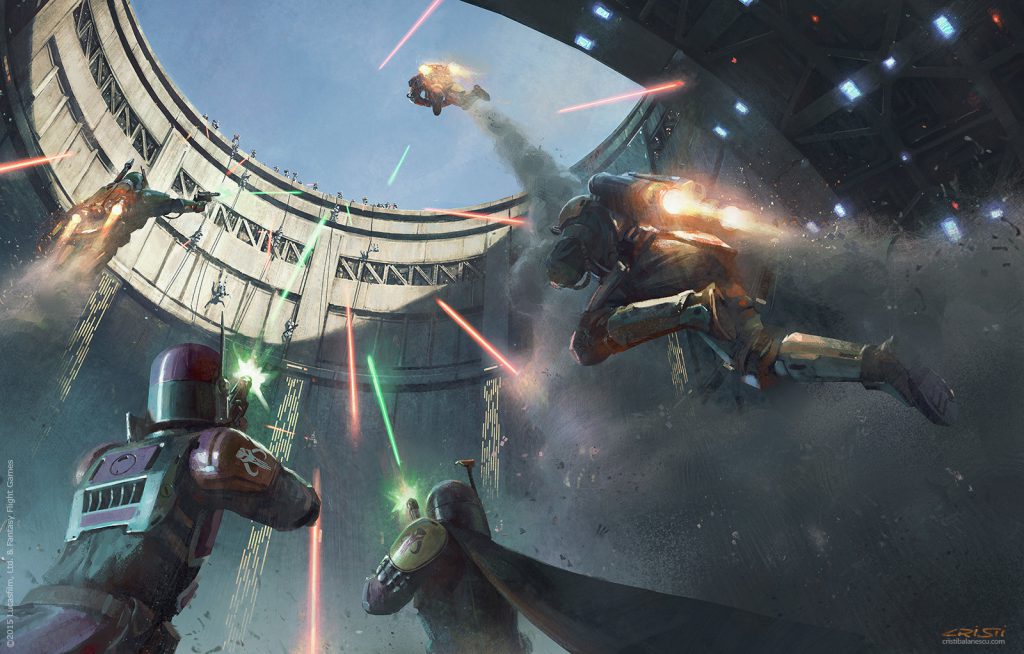
The spotlight moments of these changes?
The Good
- Armor scaling – Armor nerf – All Armor is now Armor X, imposing a hard cap on how much damage any armor can mitigate and bringing more granularity to Armor.
- Build-a-bear missions – Point bidding is gone and both players use their hand-picked Battle Deck to build a mission at the table. The battle’s mission no longer blatantly favors the player that bid harder for blue. Filling out your 1000 points (yes) is encouraged.
- Progressive Victory Point scoring – Victory Points (VPs) are now scored steadily via primary and secondary objectives. Objectives aren’t mostly scored at the end of the game or key rounds (like 4 and 6).
- Force Push-ed out of the window – The card once-stapled to every force-user is now 40 points. Force-users have dropped in points across the board by about 20.
- Scaling Cover – The hard mitigation of 1/2 Hit results is gone. Cover is now a save rolled before (and in addition to) defense dice that scales with the number of incoming Hit results. This greatly smooths out trooper durability across the board.
- Unlimited order range – Orders can now be issued regardless of distance.
- Entry barriers and model validity – All existing models remain valid after the refresh (just not immediately. Sorry, clones). Heavily adjusted cards (units, upgrades, Command, Battle Deck) are available via print-and-play. You can start playing updated Legion right now.
The Bad
- Armor nerf – All Armor is now Armor X, imposing a hard cap on how much damage any armor can mitigate. This harms vehicles most, as the blanket Armor rule that provided immunity to unmodified Hit results is gone. AT-RTs are Armor 2, Occupiers are Armor 5, and Dark Troopers are Armor 3.
- Transport nerf – Transport is now a modified deployment rule that provides a significant forward-deployment to the transported unit. Transported units are forced to debark in Round 1 and can’t be carted around at will.
- No Cover for vehicles – Vehicles can no longer receive the benefit of Cover. This section is starting to look like a list of vehicle nerfs.
- Formatting issues – At launch, not all units and upgrades were switched to the new card format. Some key models (Clone Heavy Weapons) don’t have new cards yet. The release is inconsistent, leaving many players feeling pulled between old and new. Artless upgrade cards and the removal of keyword descriptions from unit cards are problematic.
- Piles of print-and-play – The labor of switching over to new systems and cards has been shunted to us via print-and-play. The physical release of new cards is still in development and is planned for Q3 2025 (per their Ministravaganza presentation).
Wait and See
- 1000 point games are now standard. That’s an extra 25% over the old 800 points. Higher activation potential, larger battles, increased army building flexibility. The removal of Round 6 should counter the increased round length, but armies are now big.
- Deployment and Round 6 are gone. Deploying to the table is now handled as part of Round 1’s activations.
- New Missions + Sudden Death – The all-new mission system is designed for dynamism and constant conflict. Any player who achieves 12 VPs instantly wins the battle. The evolving meta will see to the effectiveness of this system.
There are too many impactful changes to document here, but the aforelinked PDFs helpfully highlight new changes in blue text, so players can catch up quickly. Some of the biggest ones include:
New Objective System
The objective system has been replaced. This invalidates all previous Battle Deck cards (Objective, Deployment, Condition) found in the Core Sets, Essentials Kit and Vital Assets. The new Battle Cards are in a print-and-play PDF and will probably be supported by a physical release next year. If you want to be up-to-date, you have printing to do. This may be the most substantial change to Star Wars: Legion since its release in 2018. It reshapes the entire tempo and ‘feel’ of the game in ways that will be realized in the coming months.
The short version is as follows (Core Rulebook, p. 18-19):
- During army building, players assemble a battle deck consisting of exactly three Objective, Secondary Objective, Advantage, and Map cards. No duplicates.
- At the table, the players roll off to determine who is the blue player.
- The new Mission Dashboard – a mission tracker – is placed on the table. Each player separates their cards into piles by type (Secondary Objective, Advantage, etc.) and shuffles each pile.
- Mission Building begins:
- Blue player places a token on a side of the dashboard to show that it’s theirs.
- Blue player reveals either the top card from their Objective or Secondary pile and places it in the corresponding space on the dashboard.
- Red player reveals the top card from their pile of the other objective type and places it into the corresponding space on the dashboard.
- Both players reveal the top card from their Advantage pile and place them into the corresponding spaces on the dashboard.
- A basic mission is now built, but can be modified. Modification is alternating and the blue player goes first. Players may do any of the following:
- Reveal the next top card from their Objective pile and replace the mission objective with that one. Discard the old objective.
- Reveal the next top card from their Secondary Objective pile and replace the current Secondary Objective.
- Reveal the next top card from their Advantage pile and replace their current Advantage.
- Make the opponent reveal the next top card from their Advantage pile and uses it to replace their Advantage.
- Move the blue token to their side of the dashboard if they don’t have it and become the blue player.
- Pass a turn with no effect.
- After each player has modified the mission twice (passing a chance to modify counts as modifying), the mission is built and set in stone.
- Blue player then chooses a side to deploy from. Red gets the opposite side.
- Follow setup instructions on Objective cards.
- Follow setup instructions on Secondary Objective cards.
- Starting with the blue player, both players follow setup instructions on their Advantage cards.
That’s the new mission building system. It happens at the table and is both collaborative and competitive.
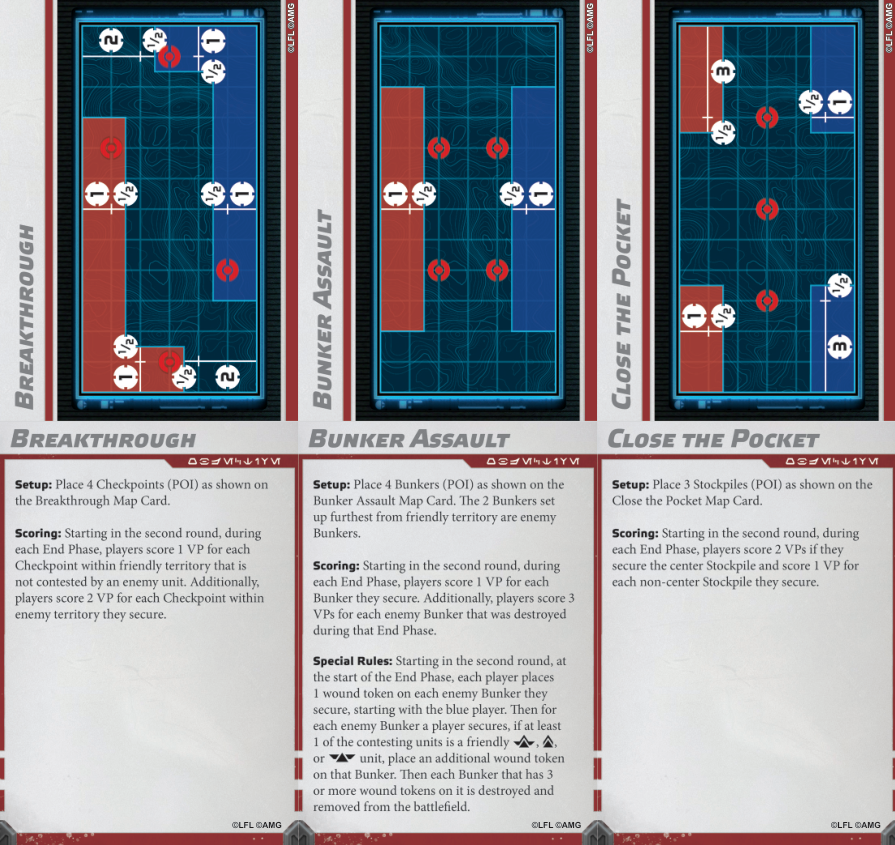
Bidding for blue player by using up less of your army point budget is a thing of the past. Everyone is now incentivized to use their whole budget because each mission is freshly tossed at the table. Everyone can tweak the mission and impose challenges on their opponent. Since blue player gets to go first, they have the advantage of acting first when building the mission. But their opponent has the advantage of finishing a given step and imposing the last word on blue player. That’s before we factor in the ability to just yoink the blue token and become the blue player.
AMG’s stated intention with this new system was to eliminate the inherent advantage that the blue player used to have and force players into conflict more quickly. Previously, the player who won the bid by putting less points into their army would be able to dictate the map, objectives, and battlefield conditions for the match. This could lead to an overwhelming advantage for blue player. Often, the difference in army point value was marginal. The armies were almost evenly matched, but one player is forced to play entirely to the other’s strengths.
The new process is more interactive. It’s also far less predictable than the all-or-nothing bidding system used previously. You’ll never have a situation where you can dictate every reality of the mission, but you’re also never left out of the process entirely.
However, it’s time consuming. Building the mission is now a small minigame that happens before the battle. It takes place before objectives and armies are set up, and will pressure players for time in tournament settings. I personally find the intentions admirable. Balance is a necessity in every competitive game. While the Star Wars miniature games all used a bidding system under FFG that was quite good for its time, its shortcomings are well-known to anyone who has played extensively.
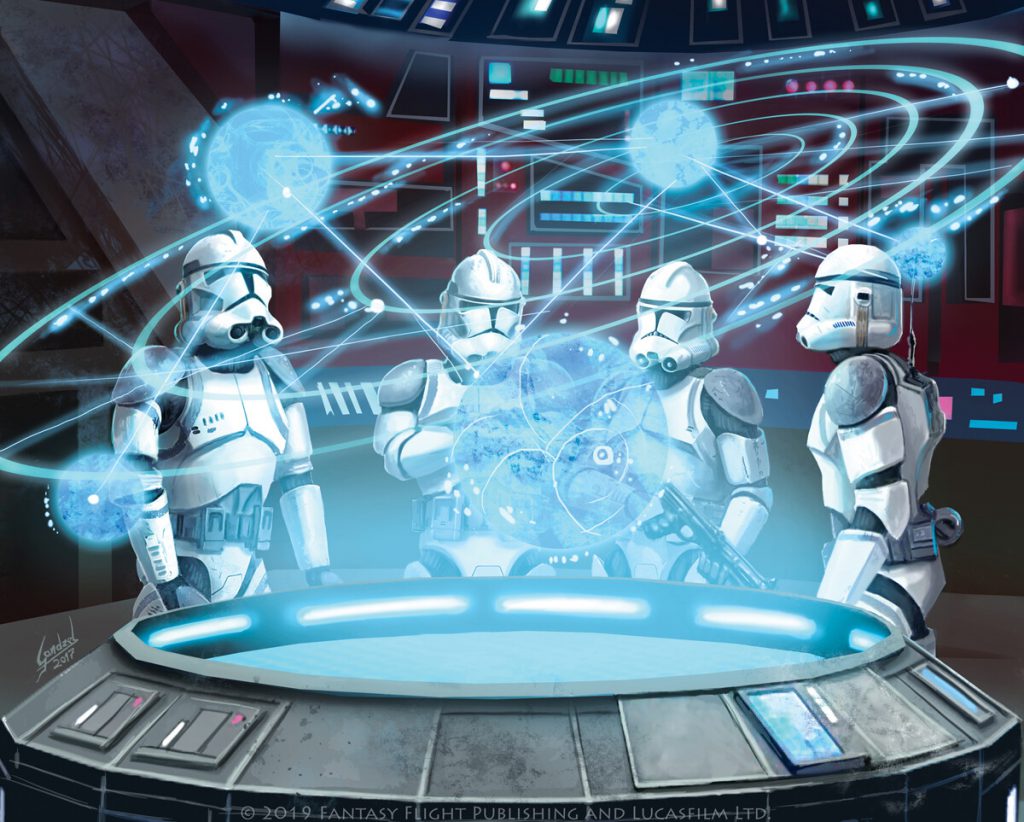
Take and Hold
Objectives (as in the items, not the mission concept) have also been overhauled. There are now two types of objective tokens. Assets can be carried by units. Points of Interest (POIs) are locations of strategic importance. 40K players will be very familiar with racking up enormous casualties over the random tokens on a table.
I won’t outline every objective, but one trend that’s caused spirited discussion is that every Objective released so far uses POIs and VPs are scored by standing on them better than the other player. Asset objectives currently exist only in Secondary Objectives.
Individual games will develop very differently based on battlefield features like terrain and scoring rules, but opinions are split on whether take-and-hold objectives are ideal. Mechanically complex objectives like Hostage Exchange can be very fun and thematic, but they increase the cerebral burden of playing the game. On the other hand, take-and-holds are dry. This change goes firmly into the we’ll see category of reception.
Secondary objectives are more diverse, which befits their role as an alternate way to score VPs when an opportunity arises. Recon Mission rewards peeping on enemy units in battle. Bring Them to Heel is about generously donating suppression tokens to the opponent. Sweep and Clear is basically a bingo card for creative places you’ve killed enemies.
It looks to me like the Secondary objectives took most of the flavor from the primaries. That’s not necessarily a bad thing, since you’ll always have one of each and they will shake up an ongoing match in unpredictable ways.
In-all, I think that a reworked objective system is greatly needed by this game. It’s been more than half a decade and Legion has developed the inevitable bloat that comes with numerous releases without major revision. Maybe I’m just not elite enough of a player to see it, but I’m not picking up on any glaring issues in the new system and I hope it serves its design goals.
The Magic 1000
So… the standard game size is now 1000 points. An extra 25% above your standard 800. Don’t spend it all in one place. And definitely don’t spend it all on vehicles until the dust settles.
1000 point standard games have some serious implications:
- More army on the table. Greater coverage of objectives and territory.
- Movement will be messier (models no longer obstruct each other’s movement to compensate)
- Longer average round length (round 6 was deleted to compensate)
- Individual commands are less impactful due to the extra stuff on the table (commands can now be issued at unlimited range)
- Buy more! Buy more!
Look, I don’t know how this will pan out. All I’m going to say is that it’s here and those of us with a painting backlog just got a proper kick in the ass.
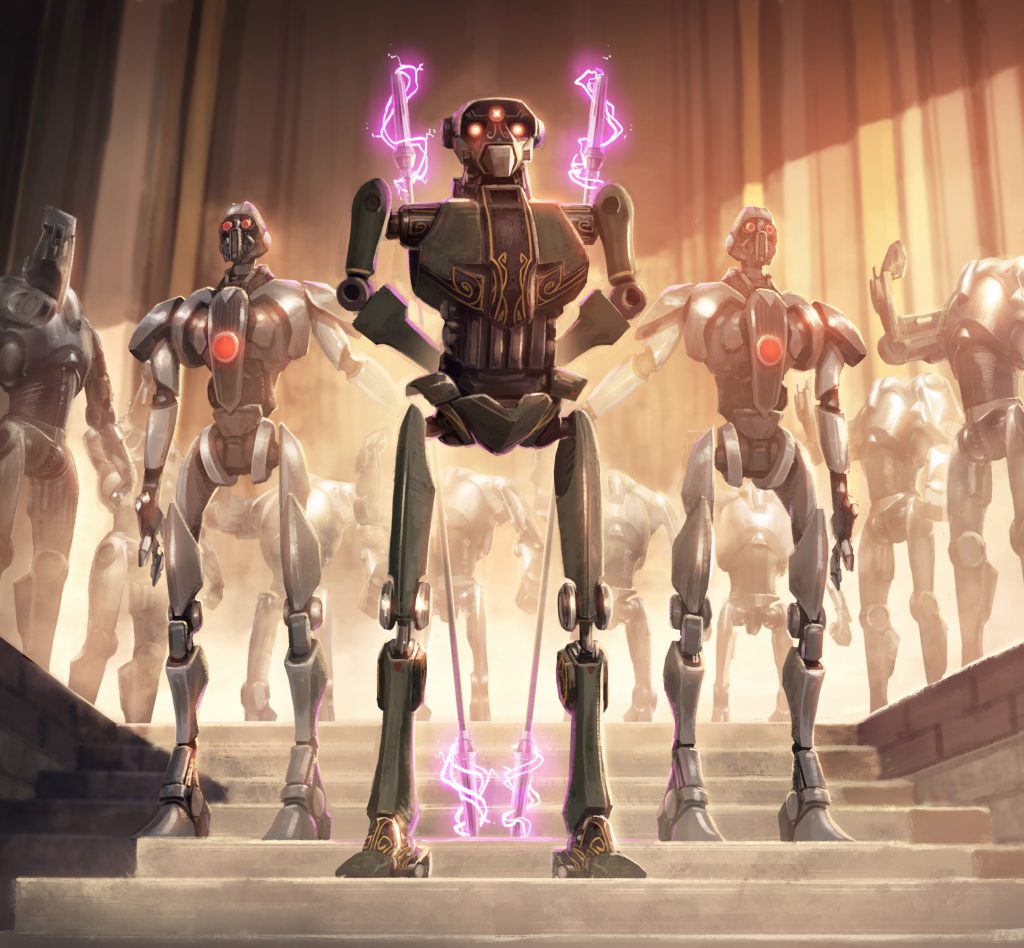
Five Rounds Rapid
Round 6 was straight up deleted. AMG stated that since the new objectives promote aggressive gameplay, and there’s more stuff on the table, removing a round was a needed time-saving measure. The new objectives should also push players to score VPs consistently, which de-emphasizes the old end-game VP shenanigans.
Players are now pressed to accomplish more with the time they have. The Command Hand remains unchanged in size and composition, so fewer rounds should make it easier to use your crucial Commands and avoid the problem child in the pile.
All my Homies Hate (to Love) Force Push
Points updates also happened. See this PDF. A number of adjustments were made to popular units. Rebel DH-447 Snipers got an increase. Stormtroopers got a price reduction but downgraded their melee attack, which really shouldn’t be problematic.
The main highlight/lowlight is about the pesky jedi. AMG saw fit to hit Force Push with a sledgehammer. It’s +30 points and now sits at 40 points. That would be absurd, but literally every force user dropped by about 20 points to compensate. This decision was in response to the extreme utility of Force Push compared to literally every other Force upgrade. In AMG’s collective mind, Force Push was singlehandedly changing the value of force-users in Legion.
In general, I agree with the sentiment. While most Force upgrades have a distinct and specific effect, Force Push was the Mage Hand of Legion. It’s the ultimate utility tool. Move enemies off objectives. Disengage enemies from a friendly unit. Disengage yourself from melee. Force an enemy unit to engage you. Yoink the enemy objective carrier. It’s a game winner and it should be priced to match.
Making force-users cheaper while nerfing Force Push hard should make those other powers more appealing. If you still want to use Force Push, you’ll be paying an extra +10 or +20 points over the old days. Which is very doable, since there’s now an extra 200 points in army building.
New Unit and Upgrade Cards
Unit Cards
The two things that wargamers hate most are how things are and change. This is no exception.
The not-a-new-Edition refresh for Legion arrives with redesigned Unit and Upgrade cards. The new format is larger and reorganized. The most notable changes are the removal of full descriptions of keyword rules from cards (they’re in the Core Rulebook now), the removal of art from upgrade cards (I dislike this), and a lot of new unit art (cool). Unit cards are double-sided. The front contains information relevant to playing the game: speed, attack and defense, keywords. Army building information (points and upgrade slots) are on the back with a full-size art print.
Armada players will recognize this as the same design taken by FFG in the final Armada releases. Game-relevant information on the front. List building information on the back.
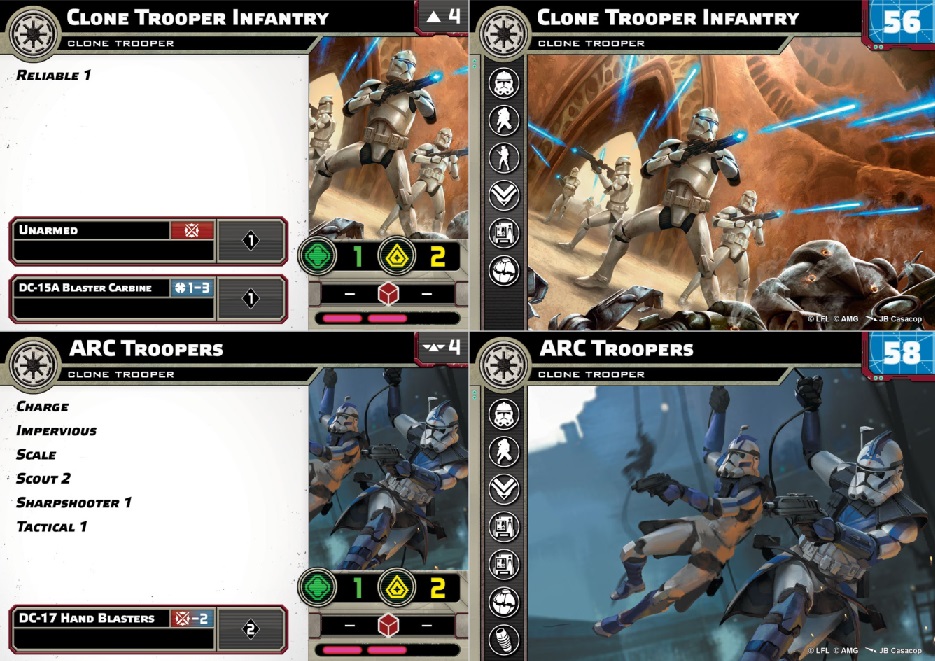
The tragedy of graphic design is that when it’s done correctly, it goes unnoticed. However, the flaws are glaring. To my eyes, the new unit cards are an improvement. Moving the army building information from the front face opens up space to enlarge the art and other details. The points and upgrade slots are mostly irrelevant in battle anyway.
Key elements such as defenses, and surges are now arrayed in side-by-side blocks. Weapons are stacked in separate blocks rather than side-by-side without pause. These adjustments make the card easier to read.
My main complaint about the new unit card is the removal of keyword descriptions. Those were pivotal to learning Legion when I started and are still a useful reference. Despite improvements in readability, this is a loss of accessibility for people with memory issues and makes gameplay more difficult for people who can’t commit the rules to memory. I’m puzzled by this change because the new design opens up space that could be used for this purpose but doesn’t. A quarter of the card’s surface area is now devoted to unit art. Art is pretty but contributes little to gameplay. I think the space could have benefited greatly from full text descriptions of obscure keywords like Makashi Mastery.
The full list of keywords and their descriptions is 11 pages long in the core rulebook and having a copy handy could become important. Otherwise, I hope that army building tools will save us by implementing utilities that can print a PDF of your army’s keywords Battlescribe style so you have everything on hand.
Upgrade Cards
Upgrade cards have also been buffeted by the winds of change. The new line of print-and-play upgrade cards don’t have art. The art has been replaced by an outsized icon of their upgrade type.
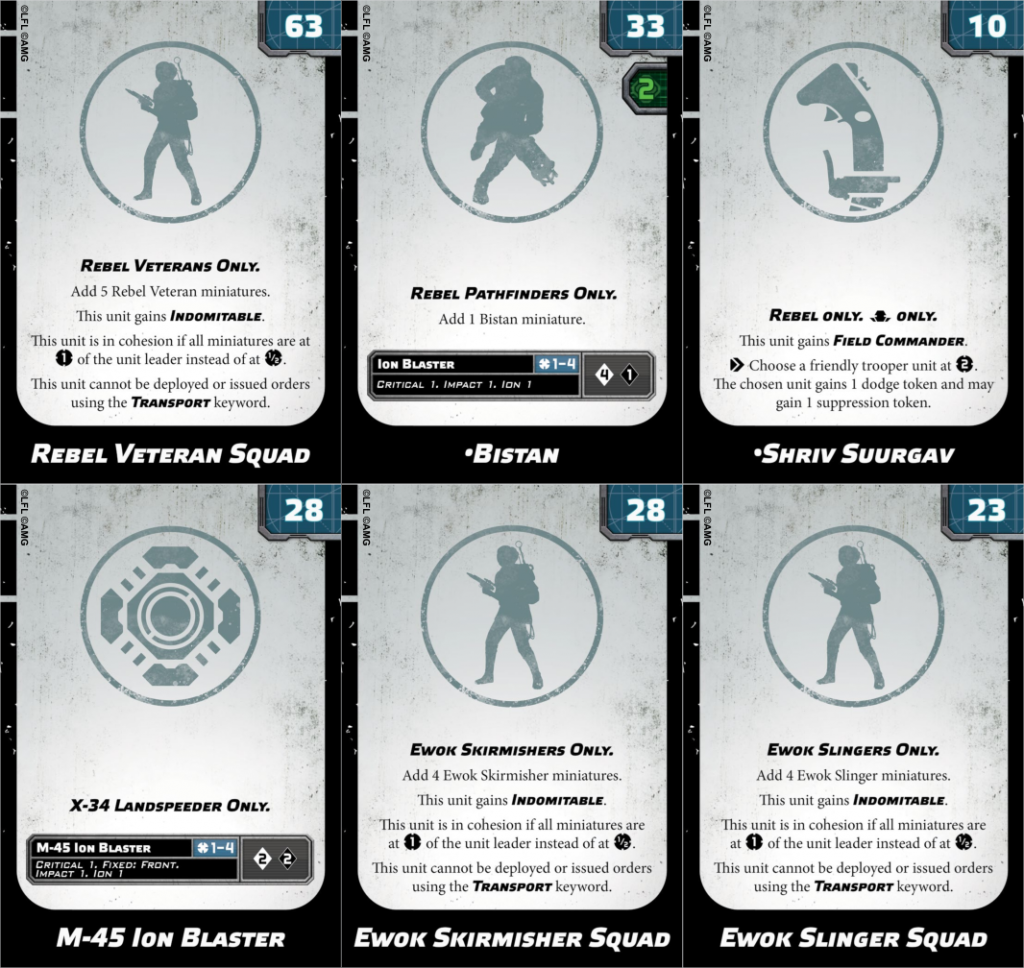
This decision is downright baffling to me. Upgrade cards are one of the few entities that benefit from having art for readability since they have relatively little text otherwise. A group of upgrades attached to one unit is now more difficult to distinguish. There is so much unused space that could be used to detail keywords and rules in greater depth, but they… don’t. The informational text is small. There are no icons to identify faction-specific cards. The centerpiece of each card is a generic icon informing you of the slot it goes into. I see these changes as a downgrade.
Notable Unit and Card Changes
While I’m here, I’ll talk about some of the adjusted units and upgrades. There’s been a lot.
- Exemplar is now attached to commanders across different factions. However, it was removed from Padmé.
- Corps units may take a personnel upgrade that doubles the unit size while adding Indomitable and other rules to manage this. The strength of their dice pool is managed by the new scaling cover system.
- Oversized units can receive orders more efficiently, but the existing single-model personnel cards are still there.
- Brimming Blobs of Big Booty B2s Bolster Bigger Battle Brackets.
- Phase I and Phase II clone troopers were merged into a Clone Trooper Infantry unit with all existing upgrade slots.
- The Republic now has a unique upgrade slot: Squad Leader.
- Some Republic models don’t have valid rules at the moment. They’ll be brought up to standard in future.
- Some units may now fire their pistols in melee. Fleet Troopers and ARC Troopers lead the way.
- With the changes to deployment, the only units that can be deployed on the table before Round 1 must have the Prepared Position keyword. Most of these units (Rebel Veterans, Shoretroopers) are now Speed 1.

Beyond the Cardboard
In my mind, the Unit and Upgrade cards have been the weakest portion of this refresh. For one, the collection is simply incomplete. Not every unit and upgrade card was transferred over to the new format. For now, players have to mix legacy cards, point cost PDFs, and new cards to assemble an army. Most of us get by using army building software, but the lack of cohesion is frustrating.
The card redesigns were met with a mixed reception, but my main grievance lies with the new upgrade cards. Artless upgrade cards. Genuinely more difficult to distinguish from each other. Vast amounts of unused space. Many of them refer to unique characters who are now indistinguishable from a grenade at table distance. Honestly, just an eyesore.
A good effort was made to bring the game to a playable state as soon as possible after the release, but there are still holes. At release, Republic players don’t have cards to represent all of their heavy weapon models. If I were a more suspicious person, I’d say that these are exactly the growing pains of a tabletop game transitioning into a new edition…
Major Rule Changes
Movement – “He made a fair move. Screaming about it can’t help you.”
- Unit leaders with notched bases may now pivot up to 90° before initiating their moving.
- More maneuverability for notched base units.
- All miniatures may now move through other miniatures when moving, as long as they don’t end up overlapping.
- This greatly simplifies movement and is crucial for babysitting 200 points of stuff crowded onto the table.
- My only quibble is that it allows movement through enemy units without obstruction.
- The Displacement rules for moving over units and potentially inflicting Suppression against them are gone.
- Unit leaders may end their movement by touching any part of the appropriate-length movement tool.
- Previously, they had to end their move notched into the far end of the tool or centered partway down the tool. This change gives unit leaders some lateral maneuverability and speeds up movement.
- Deploying to the table is now a move action that occurs during a model’s first activation, in Round 1. The unit initiates a move onto the table by placing one end of a movement tool (of the right length) against an eligible table edge and executing its move normally.
- Units in Transports deploy using their own complicated branch of this rule.
- Units with the Prepared Position keyword deploy just before Round 1. They are deployed wholly within friendly territory (per the map used).
- Vehicles can now score Victory Points (thanks to Piotr from Facebook for this).
- This major change offsets many of the nerfs that vehicles suffered by making them extremely relevant to game objectives. Vehicles are now impossible to ignore or ‘mitigate’, but must be dealt with if they’re parked on a valuable objective.
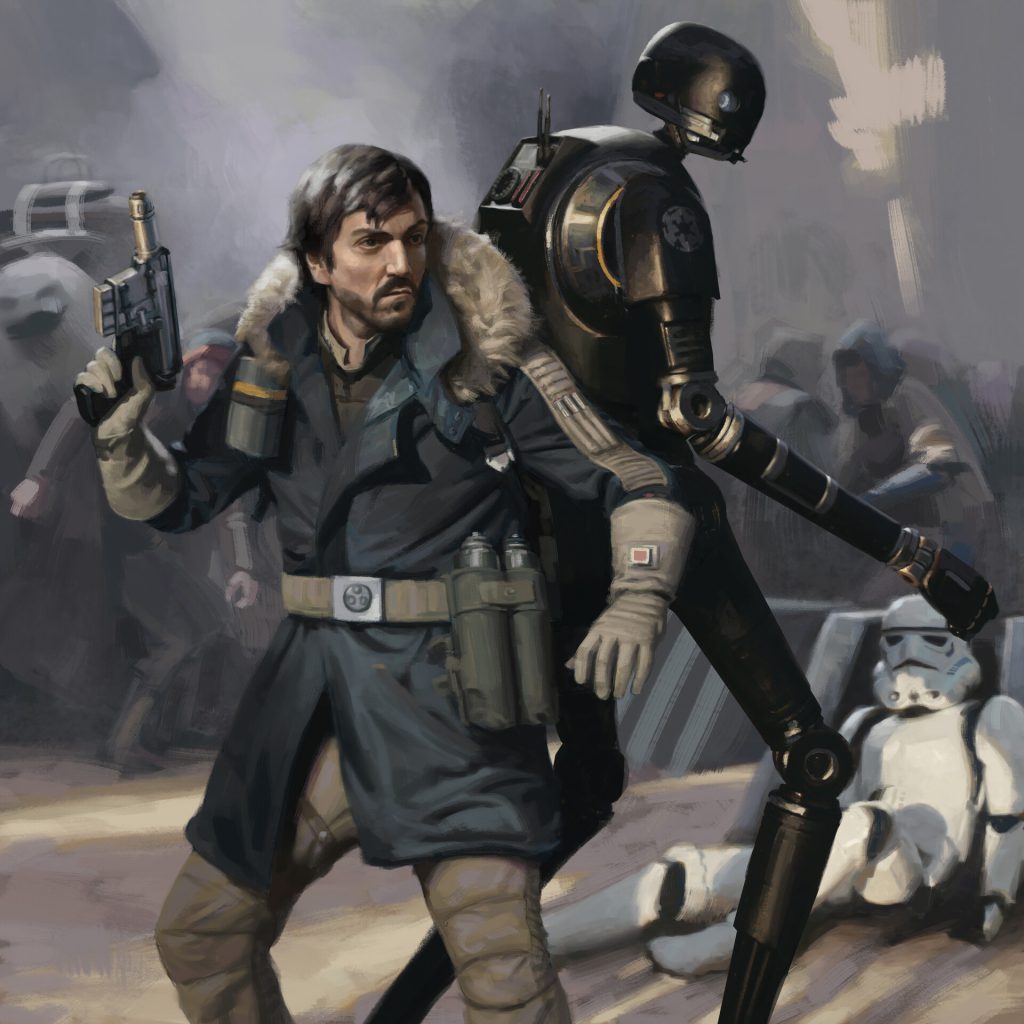
Cover – Stay Low, Stay Alive
The existing cancel 1 or 2 Hits system of cover has been replaced with a rolled save system. A unit in cover can now roll a white defense die for each Hit in the attacker’s pool. If the unit has light cover, each Block cancels a Hit. If the unit has heavy cover, a Block or Surge cancels a Hit.
Rolling a cover save does not prevent the use of dodge tokens and defense dice, which are resolved afterward.
In short, cover is now a bonus save that scales with the number of incoming hits. There are some key implications:
- Large dice pools are no longer a catch-all solution for firepower. Previously, a unit could ‘break’ heavy cover pushing past the two negated hits from heavy cover and pouring the damage in.
- Scaling cover saves opens up design space for larger dice pools like the new double-size corps units.
- Small units without Pierce/Sharpshooter are now a meaningful shooting threat. Previously, a couple of leftover models in a squad would find it impossible to kill enemies in Heavy cover. Lone survivor sergeants are actually good shooters now.
- Units with white T-shirt saves or Low Profile (Rebel Troopers, Rebel Commandos, Ewoks) are big winners here.
- Shooting actions will now take longer to resolve. This will be an issue in the era of 1000 point armies.
Everyone had an opinion about Legion’s old cover system. It was enjoyable to use because it was so simple, but major compromises in game design were made to keep it functional. Large dice pools are a historical balance problem due to their ability to pulverize a unit after enduring 2 canceled Hits. Likewise, tiny dice pools that couldn’t break cover were essentially useless. This system could be the middle ground so many of us are looking for.
Oh, right. Cover interactions for vehicles are now much easier to resolve. Because vehicles don’t get cover (Core Rulebook, p. 40).
Anyway, uh, next topic!
Armor – (Un)armored Bulwark
All Armor has been changed to Armor X. The unrestricted Armor keyword that provided functional immunity to Hit results is out. All units that used to have the unrestricted Armor keyword now have a limit on how many Hit results they can block.
This could be considered a nerf to every single unit that had Armor replaced by Armor X. Heavily armored units like tanks, AT-STs, and… the LAAT/le (?) are now Armor 5. Light vehicles (AT-RT, X-34 Landspeeder) are Armor 2. The T-47 Airspeeder and Dark Troopers are Armor 3.
This change was clearly meant to make the Armor keyword more granular. Previously, the AT-RT with its exposed pilot was just as well protected as a main battle tank. Still, I can’t help but see these changes disproportionately harming units at the light end of the scale. Securing 6 Hit results to get past an AT-ST’s protection is pretty unlikely. But any pool that could previously overwhelm heavy cover can now crack an AT-RT or Landspeeder’s protection. Some vehicles (T-47 Airspeeder, X-34 Landspeeder) have the Cover keyword to mitigate this, but that’s still only a low chance of stopping a Hit. And no, the AT-RT didn’t get Cover 1.
An extra 200 points of army building space make it easier to bring vehicles, but this won’t alay competitive players who want consistently strong performers and could spend those points elsewhere. Coupled with the inability of Vehicles to receive Cover, all vehicles have lost protection. Lighter and cheaper vehicles have it worse than the rest.
Transport – Your Uber has Reached Its Destination
Seemingly sickened by transports being used as transports, the Transport keyword is now very, very restrictive.

The Transport keyword now uses many words to describe a forward-deployment ability for the units inside. Units that are transported can get ahead of the competition (by a fair distance, too). But they’re asked politely to disembark in Round 1. There is no re-embarking or using the unit from inside a transport.
Although the threat range of units disembarking from a transport is sizable, it’s still a far cry from the ability to actually ferry troops under armored protection. This is basically an unmitigated nerf to all transports. You’d be hard pressed to make an Occupier earn its points value since you can no longer use it as a position for E-Webs… dump Darth Vader directly into the enemy line. At least the A-A5 Speeder Track has the same armor value as an actual tank to make up for its shortcomings as a transport.
Other Rule Changes
There are many other changes.
- The Pass token pool is now calculated at the beginning of each new Round and it scales with the number of undefeated units on the table. This mitigates activation advantage by ensuring that the current player with activation disadvantage will always have the option to pass.
- The number of Suppression tokens needed to suppress a unit is now equal or greater than its courage value.
- This makes it far more difficult to gain the cover benefit of suppression.
- Any ability or effect that keys off suppression will also be more difficult to obtain.
- Oddly, this change wasn’t marked in blue text despite its far-reaching consequences.
- Commanders may now issue Commands at any range.
- Radios for everyone! More flexibility for commanders! Less measuring!
- Upgrades that improved the range of receiving orders are gone.
- Grenades can only be used by one model in a unit when attacking.
- Impact Grenades are now Impact 4 to make up for this change.
- Players may measure anytime, but only with one movement tool and one range tool.
- There is now a 3-inch long half-range ruler used to measure ranges.
- Models must now be at 3 inches of each other to be in cohesion (see above half-range ruler)
- Withdrawing from melee now costs 1 action instead of all actions. No attacking, standby, or moving into melee during the activation it withdraws, though.
- Vehicle damage has been simplified. The Disabled and Weapon Disrupted vehicle damage tokens no longer exist. The Vehicle Damaged effect and corresponding token now stand in for all vehicle damage effects.
Backup – “Oddball, do you copy?“
Commanders and Operatives can now use nearby corps units to reduce incoming damage. This improves the durability of those key units. It works as follows:
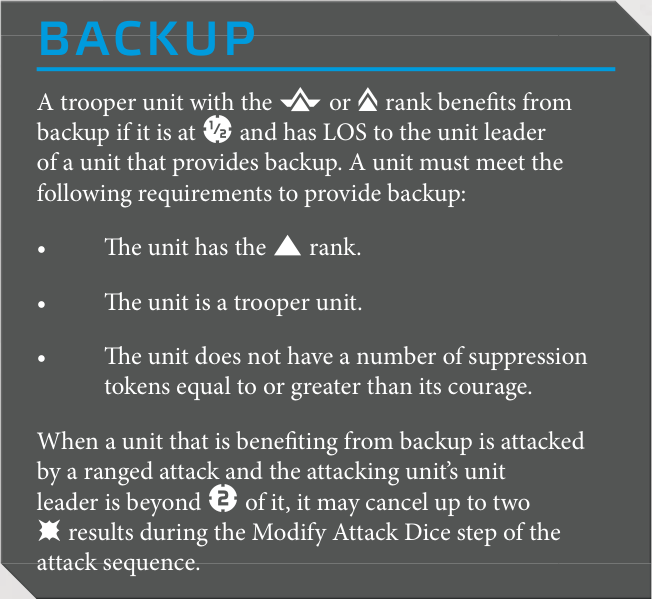
Look, my typing fingers are tired. There’s lots more. Go read the documentation if you want it all.
The Goonhammer™ Take
You’re still here and reading? Honestly, I’m impressed too.
Anyway, this is quite a thing to release and not call a new Edition.
It’s by far the biggest shakeup the game has gotten since release. Going into it, the tempo of the game has changed due to fewer, more aggressive rounds. Battles are larger. Movement is more streamlined. Scaling cover saves keep some weakened units in the game while arresting the primal horror of large dice pools. Every faction gets token sharing via the Exemplar keyword (or by simply being the Republic). Also, did I mention that every unit has radios now? Grievous isn’t shouting orders at his droid armies anymore.
There are also numerous secondary changes whose cumulative impact alters the whole game. Cheaper force-users storming the board. Double-strength corps options. Tighter unit cohesion. Backup rules for Commanders and Operatives. These are all adjustments that can tip games in a resourceful player’s favor.
Oh, and I don’t know who hurt the playtesters with an AT-RT spam list, but Armor 2 will surely curb their dominance.
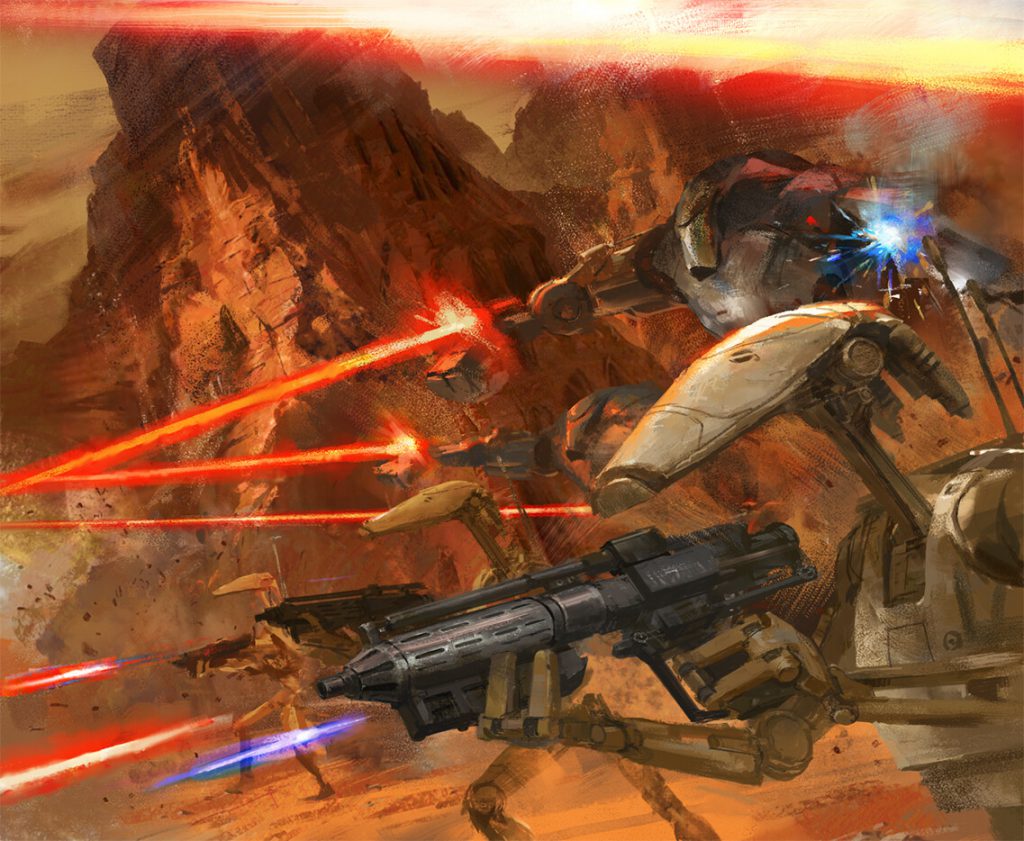
My predictions? Here:
- Fewer vehicles until we figure out what to do with them.
- Honestly, this rulebook just feels like a laundry list of vehicle nerfs.
- Several units just became much more threatening.
- Commander Luke Skywalker good?
- Fleet Troopers got Charge and can fire their pistols at melee range.
- The AI keyword has become more forgiving, with Commanders at Range 3 able to prevent the mandatory AI action.
- More diverse Force upgrades on force-users.
- Hah, kidding. We’re just gonna use Force Push while bitching about it. I’m not getting a staple remover to claw Force Push off my Operative Vader card at this point.
- Previously fragile infantry will see more use due to the scaling cover system.
- Rogue One-style Rebel lists with lots of fast, light infantry or Ewok lists are probably going to have a moment.
- Non-sniper strike team units are a relevant threat.
- People will continue complaining about the new upgrade card design. And they’ll be correct.
- Republic players won’t be happy until new releases and changes arrive to shore up their forces.
- They don’t currently have full use of their clone trooper heavy weapons.
- Padmé lost the Exemplar keyword.
I refrained from drafting this article until the changes had a few days to percolate through the community. I’ve watched responses range from they killed X-Wing and Armada and they’re coming for the infantry to this is the perfect kick to uphold Legion’s excellence. You know. The typical range of emotions wargamers express when a publisher does so much as repaints a designated parking space. As it stands, the first feedback from people playing games with the new system is trickling in. The responses are optimistic and realistic. Which is exactly the energy we need to maintain to keep improving this game.
There’s simply too much here to reckon with until we’ve taken in a few months of fresh matches and blue milk. The only thing that this rancor-sized update proves is that AMG is committed to supporting Legion and patching the game for longevity.
And for this clown who just got off the escape pod from Star Wars: Armada, that’s a good start.
This is also my first Star Wars: Legion article. If you spot any errors, please report them in the comments. Were my predictions for Legion’s future too softball? Sticks yours in the comments too. Go nuts.
Have any questions or feedback? Drop us a note in the comments below or email us at contact@goonhammer.com. Want articles like this linked in your inbox every Monday morning? Sign up for our newsletter. And don’t forget that you can support us on Patreon for backer rewards like early video content, Administratum access, an ad-free experience on our website and more.


